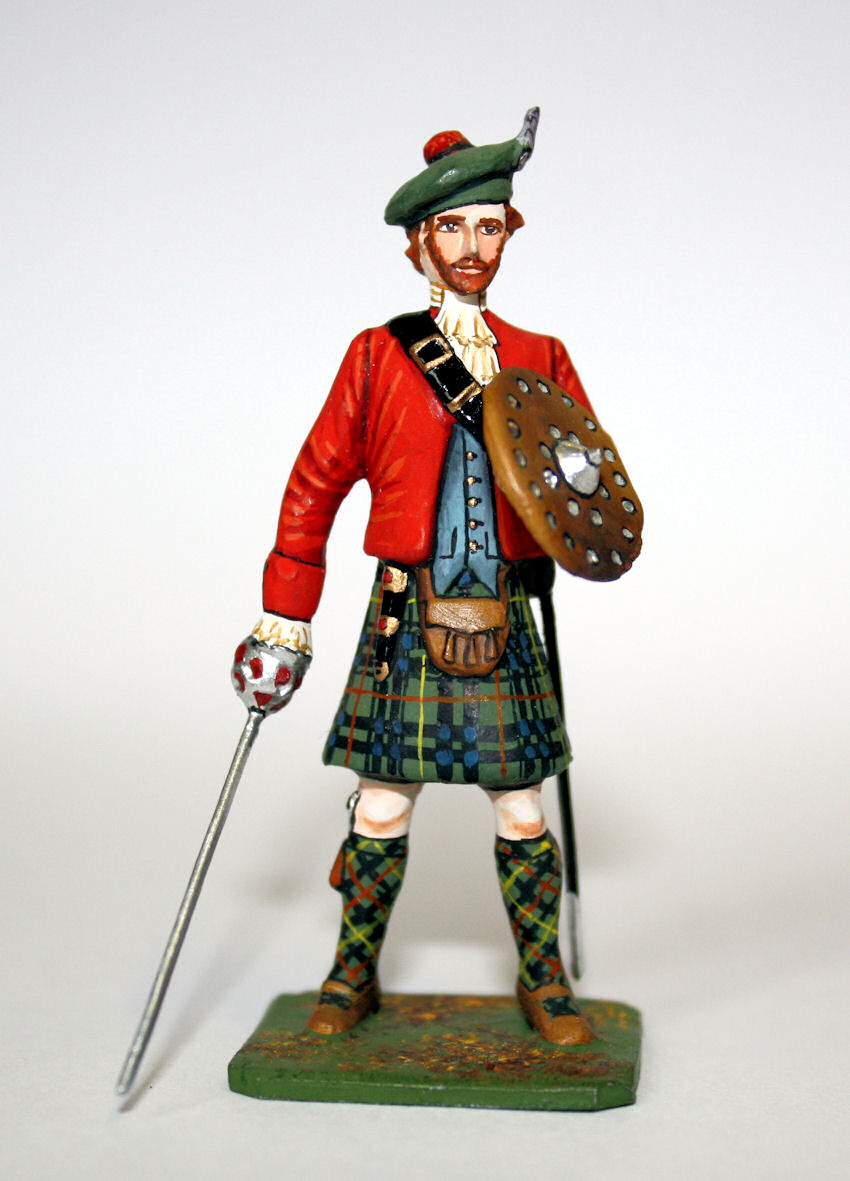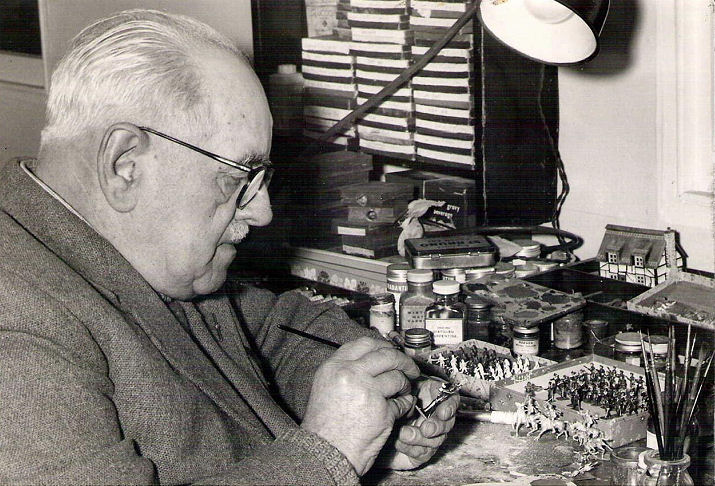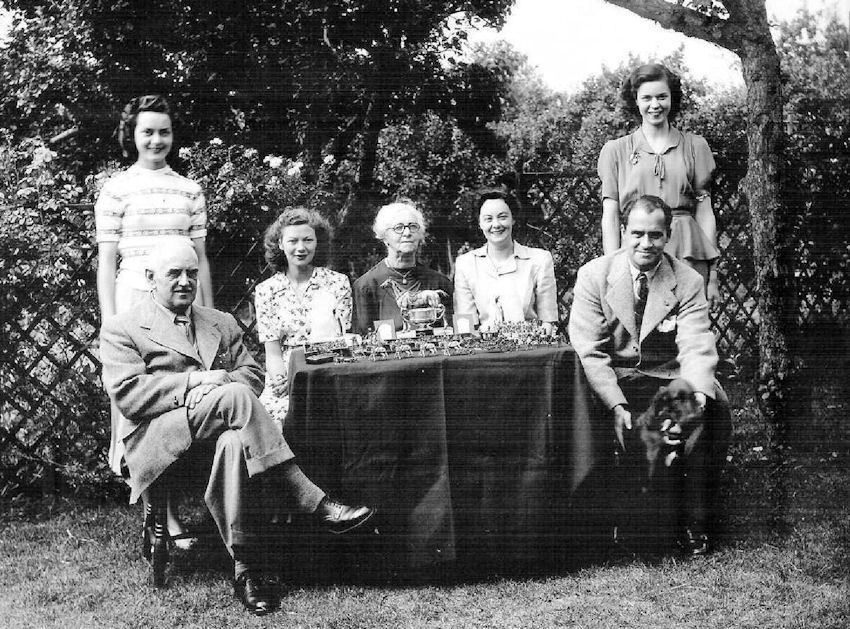Greenwood & Ball

The firm of Greenwood & Ball is known to all collectors of model soldiers. Figures made at its tiny workshop at Horsehay adorn dioramas in museums all over the world, and are to be found on training tables in many of the principal military academies of the west.
The founder of the firm was John Ambler Greenwood, a salesman, born in Yorkshire, whose territory included Shropshire. About 1936 he happened to be staying overnight at the shop in Spring Village, Horsehay, where he played chess with Kathleen Ball, the shop keeper’s daughter. After a game or two, Mr Greenwood thought he would improve on the figures, and “dress” them up a bit. He fashioned a number of chess figures, such as knights in full armour, using “toy” soldiers and plastic wood, coupled with a bit of filing and carving.
The interest grew from a hobby to a business. He gave up his job, and he and Miss Ball teamed up to make model soldiers employing two girls to help.
Greenwood & Ball did many dioramas including one depicting the battle of Crecy for West Point military academy in America, and several for the King Charles Tower on the walls of Chester depicting the Civil War. During the Second World War, Greenwood & Ball supplied figures for military training tables, on which operations such as the Dieppe raid were rehearsed. In 1947 they made the figures for the Battle for Freedom Exhibition in London, which portrayed British history in a series of scenes, from the signing of the Magna Carta in 1215 to the crossing of the Rhine in 1945. He also invented a game of indoor cricket.
It was followed by a substantial contribution to a United States exhibition of the pageant of Jewish history, depicting outstanding events in that people’s history from ancient times to the establishment of the state of Israel.
Production of the models was first begun in 1936 at the home Miss Ball, which was the small village shop in Spring Village, Horsehay. Later, production switched to a workshop which occupies a building often referred to as the old laboratory, and was at one time the Horsehay Home Guard guardroom. The workshop consisted of two rooms above the old weighbridge opposite the engine shed at Horsehay Works. Mr. Greenwood was a Captain in the Home Guard during the war, and so would be familiar with this building, and because of its use at that period; it looks as if they must have occupied it after the Second World War.
Miss Kathleen Ball married Mr John A. Nathaniel, a quantity surveyor, in Edinburgh in 1951 and she later set up home there. The business remained at Horsehay until about 1956 when they moved to workshop in Broseley Wood. Here they employed only one painter while Mr Greenwood continued making the models, moulds and castings and Kathleen did the assembly and soldering. Greenwood & Ball’s clientele included American collectors, including film legend Douglas Fairbanks Jnr, who had over 6,000 figures. There is a story that Fairbanks visited the firm, although we haven’t come up with first hand proof that he did.
John Greenwood moved to West Ayton near Scarborough in April 1959 and continued making the models and fishing in the Derwent near his home, a pastime which gives him time to think of new ideas for his business. He passed away in 1971 at the age of 78 years.
In September 1985, Mrs Kathleen Nathaniel, nee Ball, donated to the Ironbridge Gorge Museum about 250 models, of which the Director Mr. Stuart B Smith, described as the most valuable collection of objects which the Museum has yet been given.


Original workers at Spring Village, Horsehay, about 1949-50. Left to right:- Mr. Greenwood (seated), Eleanor Clay (standing behind), Brenda Yarnald, Mrs. Ball (Kathleen's mother), Kathleen Ball, Cynthia Booth (standing) and seated, an American gentleman called Herbert Jackson with Mr. Greenwood's Red Setter dog called Flare.
By Malcolm Peel